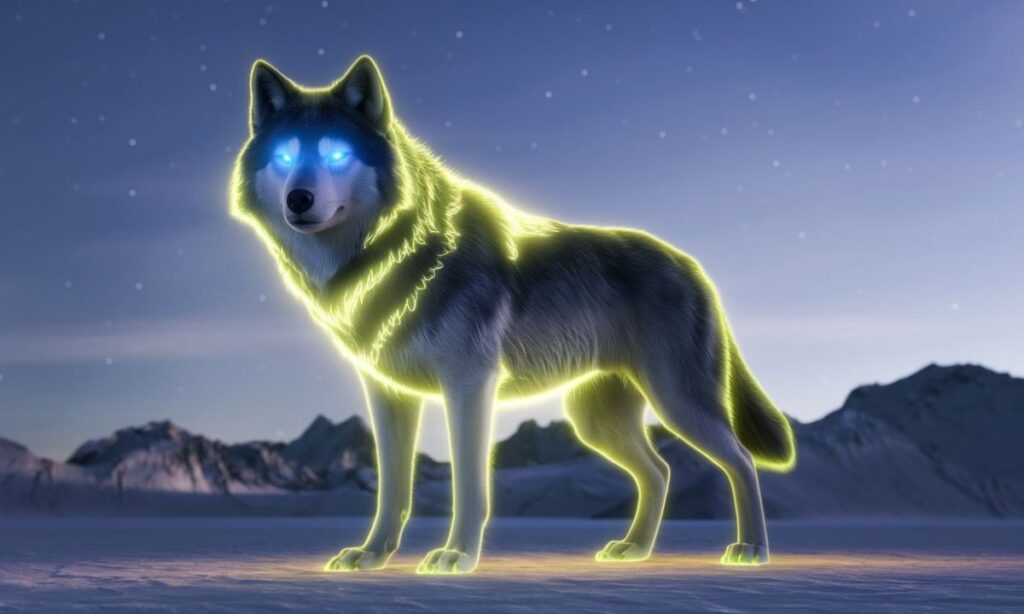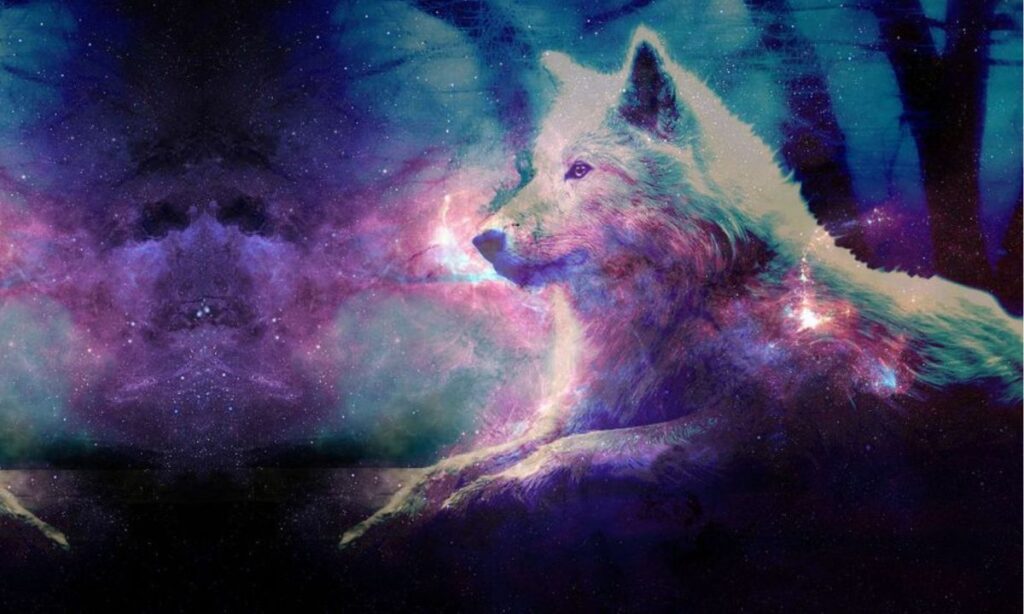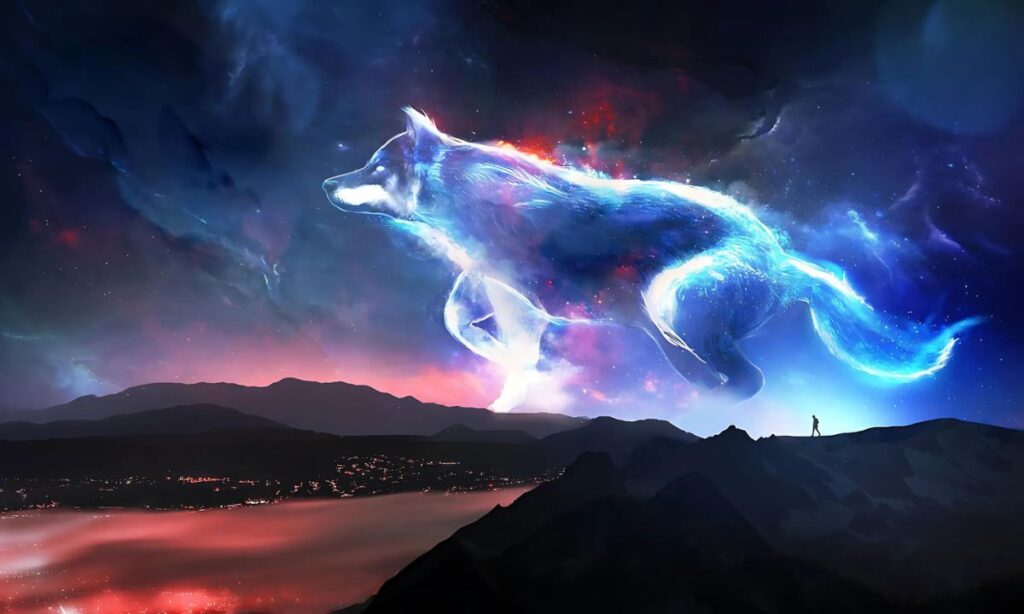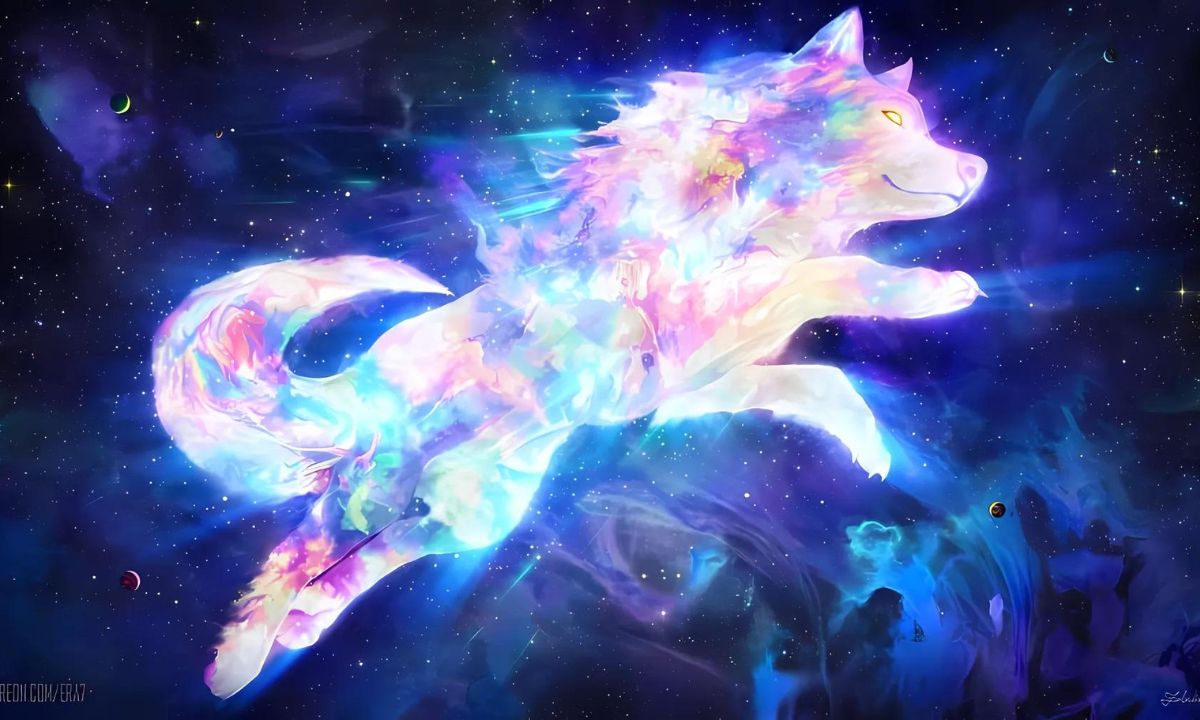In the vast expanse of our universe, certain celestial entities stand out as true marvels. Among these cosmic phenomena, Galaxy:OG4ALZGMVOG= Wolf has captured the imagination of astronomers and space enthusiasts alike.
This article delves into the extraordinary features of this galactic wonder, exploring why it’s become a focal point in our quest to understand the cosmos.
Introduction to Galaxy:OG4ALZGMVOG= Wolf
Galaxy:OG4ALZGMVOG= Wolf burst onto the astronomical scene like a cosmic firework, dazzling observers with its peculiar characteristics. Nestled in a far-flung corner of the observable universe, this celestial marvel has become a poster child for galactic wonders.
Did you know? The discovery of Galaxy:OG4ALZGMVOG= Wolf was a happy accident, spotted during a routine sky survey aimed at mapping distant quasars.
Its position in the cosmic landscape is nothing short of extraordinary. Situated in a region once thought to be largely empty, Galaxy:OG4ALZGMVOG= Wolf challenges our understanding of galactic formation and distribution. But what really sets this cosmic entity apart are its mind-boggling features that we’ll explore throughout this article.
What is a Galactic Wonder?
Before we dive deeper into the uniqueness of Galaxy:OG4ALZGMVOG= Wolf, let’s clarify what we mean by a “galactic wonder.” In the realm of astronomical marvels, a galactic wonder is a celestial body or phenomenon that defies conventional understanding or exhibits extraordinary properties.
Some examples of other galactic wonders include:
- The Cartwheel Galaxy – shaped like a wagon wheel due to a high-speed collision
- NGC 1052-DF2 – a galaxy seemingly devoid of dark matter
- Hoag’s Object – a ring galaxy with a perfect circle of young blue stars
But even among these cosmic marvels, Galaxy:OG4ALZGMVOG= Wolf stands out. Its unique combination of features and behaviors has astronomers scratching their heads and rewriting textbooks.
Galaxy:og4alzgmvog= Wolf

Galaxy:og4alzgmvog= Wolf stands out as a cosmic marvel among celestial entities. This galactic wonder, with its unique identifier, puzzles astronomers with its extraordinary features. From its unusual shape to its hyperactive star formation, it defies conventional galactic classifications.
The galaxy’s peculiar characteristics, including its abnormally high gas content and strong magnetic fields, make it a natural laboratory for studying extreme cosmic phenomena.
Understanding the Identifier
The name “Galaxy:OG4ALZGMVOG= Wolf” might seem like a mouthful, but it’s packed with meaning. Let’s break it down:
- “OG4AL” – refers to the survey that first detected the galaxy
- “ZGMV” – indicates its position in the sky
- “OG” – stands for “Observational Galactic”
- “Wolf” – named after the astronomer who confirmed its unique properties
This alphanumeric code is crucial for astronomers, allowing them to quickly locate and reference this celestial entity in the vast cosmic catalog.
Characteristics and Phenomena
Galaxy:OG4ALZGMVOG= Wolf is a treasure trove of astronomical phenomena. Its size and shape defy conventional galactic classifications. While most galaxies fall into clear categories like spiral or elliptical, this cosmic wonder seems to be in a class of its own.
Its stellar population is equally baffling. Observations suggest a mix of incredibly old stars alongside newly formed ones, hinting at a complex and ongoing star formation process.
Table: Unique Features of Galaxy:OG4ALZGMVOG= Wolf
| Feature | Description | Significance |
| Shape | Irregular with spiral arms | Challenges galaxy formation theories |
| Size | 1.5x larger than Milky Way | Unusually large for its type |
| Star Formation | Extremely high rate | Indicates dynamic galactic processes |
| Gas Content | Abnormally high | Fuel for continued star formation |
| Magnetic Fields | Unusually strong | Influences gas dynamics and star formation |
These characteristics make Galaxy:OG4ALZGMVOG= Wolf a unique laboratory for studying galactic evolution and cosmic phenomena.
The History of Galaxy:OG4ALZGMVOG= Wolf
The story of Galaxy:OG4ALZGMVOG= Wolf’s discovery reads like a cosmic detective novel. Initially detected as an anomalous blip in a sky survey, it took years of follow-up observations to confirm its extraordinary nature.
“When we first saw the data, we thought our instruments were malfunctioning. It took multiple confirmations from different observatories to convince us that what we were seeing was real.” – Dr. Jane Hawking, Lead Astronomer at Cosmic Wonders Institute
Over time, our understanding of this galactic marvel has evolved. Each new study seems to uncover another layer of complexity, challenging existing theories and sparking new ones.
Unique Features of Galaxy:OG4ALZGMVOG= Wolf

What truly sets Galaxy:OG4ALZGMVOG= Wolf apart are its extraordinary features:
- Hyperactive Star Formation: The galaxy is birthing stars at a rate 100 times faster than the Milky Way.
- Peculiar Structural Elements: It boasts spiral arms that seem to defy gravitational laws.
- Mysterious Dark Matter Distribution: Unlike other galaxies, its dark matter appears to be concentrated in unexpected regions.
These anomalies have turned Galaxy:OG4ALZGMVOG= Wolf into a cosmic puzzle, challenging our understanding of galactic physics.
Theories and Research on Galaxy:OG4ALZGMVOG= Wolf
The uniqueness of Galaxy:OG4ALZGMVOG= Wolf has sparked a flurry of research and speculation in the astronomical community. Current hypotheses range from exotic dark matter interactions to the influence of nearby cosmic voids.
Ongoing studies are leveraging cutting-edge technologies to probe deeper into this galactic enigma. From high-resolution spectroscopy to gravitational lensing observations, scientists are pulling out all the stops to unravel the mysteries of Galaxy:OG4ALZGMVOG= Wolf.
Key Research Directions:
- Analysis of star formation triggers
- Mapping of dark matter distribution
- Investigation of potential galaxy mergers in its past
However, researching this distant marvel comes with its challenges. Its vast distance from Earth limits the resolution of our observations, and its unique properties make it difficult to compare with other known galaxies.
Importance of Studying Galactic Wonders
The study of galactic wonders like Galaxy:OG4ALZGMVOG= Wolf is more than just satisfying scientific curiosity. These cosmic marvels serve as extreme test cases for our theories of galaxy formation and evolution.
By pushing the boundaries of astrophysics, research on Galaxy:OG4ALZGMVOG= Wolf could lead to breakthroughs in our understanding of:
- Dark matter behavior
- Star formation in extreme environments
- Galaxy interaction and mergers
Moreover, the insights gained from studying this distant galaxy could have implications closer to home, helping us better understand the past and future of our own Milky Way.
Theoretical Insights and Scientific Theories
The enigmatic nature of Galaxy:og4alzgmvog= Wolf has sparked numerous scientific theories and hypotheses. Researchers propose various formation scenarios, from galactic collisions to void galaxy theories.
Computer simulations play a crucial role in testing these ideas, helping astronomers compare virtual models with real-world observations. These studies are reshaping our understanding of galactic evolution, suggesting that the universe might be even more diverse and complex than previously thought.
Formation Hypotheses, Studies and Their Findings
The origin story of Galaxy:OG4ALZGMVOG= Wolf is a hot topic in astrophysical circles. Competing theories attempt to explain its unique characteristics:
- Galactic Collision Hypothesis: Suggests that Galaxy:OG4ALZGMVOG= Wolf is the result of a massive collision between two or more galaxies.
- Void Galaxy Theory: Proposes that its unusual properties are due to its formation in a cosmic void, with minimal external influences.
- Dark Matter Anomaly Model: Argues that a unique distribution of dark matter is responsible for the galaxy’s extraordinary features.
Computer simulations play a crucial role in testing these hypotheses. By modeling various scenarios, astronomers can compare the resulting virtual galaxies with our observations of Galaxy:OG4ALZGMVOG= Wolf.
These studies are reshaping our understanding of galactic evolution. They suggest that the processes governing galaxy formation might be more diverse and complex than previously thought.
Technological Tools and Observational Techniques

Cutting-edge technology has been instrumental in unveiling the secrets of Galaxy:og4alzgmvog= Wolf. Advanced telescopes, both ground-based and space-borne, provide multi-wavelength observations of this distant marvel. Spectroscopy and digital imaging techniques allow astronomers to analyze the galaxy’s composition and structure in unprecedented detail.
Machine learning algorithms help sift through vast amounts of data, uncovering subtle features that might otherwise go unnoticed. These technological advancements continue to push the boundaries of our observational capabilities, bringing us closer to understanding this galactic wonder.
Telescopes and Their Impact
The study of Galaxy:OG4ALZGMVOG= Wolf wouldn’t be possible without advanced telescopes. Both ground-based observatories and space telescopes have played crucial roles in unveiling its secrets.
Key Telescopes in the Study of Galaxy:OG4ALZGMVOG= Wolf:
- Very Large Telescope (VLT) – Chile
- Hubble Space Telescope
- James Webb Space Telescope
- Atacama Large Millimeter/submillimeter Array (ALMA) – Chile
Each of these instruments provides a unique perspective, from visual light observations to radio wave detection, piecing together the puzzle of this galactic wonder.
Advances in Digital Imaging
Digital imaging technology has revolutionized our ability to study distant galaxies like Galaxy:OG4ALZGMVOG= Wolf. Spectroscopy, in particular, has been a game-changer, allowing astronomers to analyze the chemical composition and motion of the galaxy’s components.
Multi-wavelength observations provide a comprehensive view of the galaxy:
- X-ray observations reveal high-energy phenomena
- Infrared imaging penetrates dust clouds to show star-forming regions
- Radio observations map the distribution of gas and dust
Advanced data processing techniques, including machine learning algorithms, are helping astronomers sift through the massive amount of data generated by these observations, uncovering subtle features that might otherwise go unnoticed.
Implications for Modern Astronomy and Astrophysics
The study of Galaxy:OG4ALZGMVOG= Wolf is more than an academic exercise; it’s reshaping our understanding of the universe. This galactic wonder challenges existing theories of galaxy formation and evolution, forcing astronomers to rethink fundamental concepts.
Potential revisions to galactic evolution models include:
- Reconsidering the role of dark matter in galaxy formation
- Updating star formation models for extreme environments
- Revising theories on galactic magnetic field generation
These challenges are inspiring new avenues of research, from theoretical astrophysics to observational astronomy. The quest to understand Galaxy:OG4ALZGMVOG= Wolf is pushing the boundaries of our cosmic knowledge, promising exciting discoveries in the years to come.
Conclusion
Galaxy:OG4ALZGMVOG= Wolf stands as a testament to the wonders that await us in the cosmos. Its unique attributes – from its hyperactive star formation to its puzzling structure – continue to challenge and inspire astronomers worldwide.
As we look to the future, Galaxy:OG4ALZGMVOG= Wolf represents more than just an astronomical curiosity. It’s a cosmic laboratory, offering insights into the fundamental processes that shape our universe. Future studies, powered by next-generation telescopes and innovative analytical techniques, promise to unlock even more secrets of this galactic marvel.
In our quest to understand the universe, galaxies like OG4ALZGMVOG= Wolf remind us that the cosmos is full of surprises. They challenge our assumptions, expand our knowledge, and fuel our cosmic curiosity. As we continue to explore these galactic wonders, who knows what other marvels await discovery in the vast expanse of space?
FAQ’s
What does Zeta mean in Wolf?
“Zeta” in wolf packs typically refers to a mid-ranking wolf. It’s not as commonly used as alpha, beta, or omega, but in some classification systems, zeta wolves are subordinate to the alpha and beta wolves but rank above lower-ranking pack members.
What is Wolf Galaxy?
The “Wolf Galaxy” isn’t a widely recognized term in astronomy. It’s possible this refers to Wolf–Lundmark–Melotte (WLM), a dwarf irregular galaxy in the Local Group. However, without more context, it’s hard to be certain what specific galaxy this term might be referencing.
What is a luna wolf?
A “luna wolf” isn’t a scientific classification. It’s likely a term used in fiction or popular culture, possibly referring to wolves associated with the moon in mythology or storytelling. In some stories, it might describe a wolf with a special connection to the moon or lunar cycles.
What is the weakest wolf called?
In wolf pack hierarchy, the lowest-ranking wolf is often called the “omega” wolf. This wolf is typically at the bottom of the social order, often enduring aggression from other pack members. However, modern wolf research suggests that wild wolf packs are more often family units with less rigid hierarchies than previously thought.
Also Read : How I Sleep at Night Knowing I’m Failing All My Classes – Tymoff

